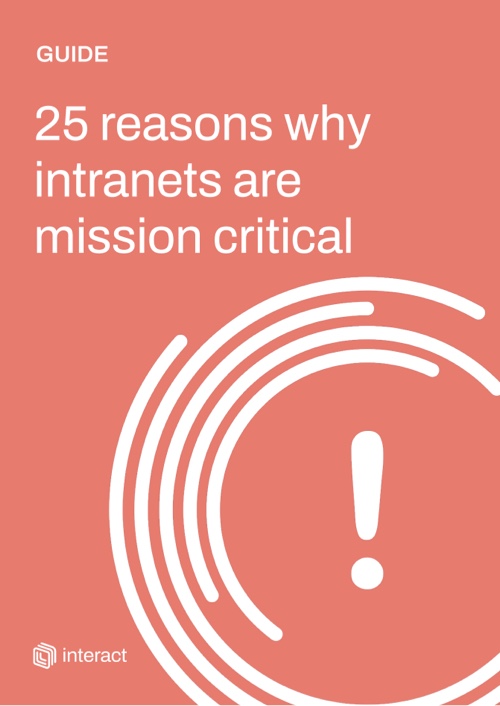While many businesses relish the idea of global domination, when your organization has a worldwide reach, it comes with a unique set of problems. In order to succeed, a solid HR strategy for managing a global workforce is required. But, how easy is it to execute this?
The opening up of trade barriers and the free movement of goods and services is seen by many as a sign of economic progress, but one which does not come without its own set of complications. More and more organizations are putting their efforts into establishing a global expansion and tap into new markets. However, to succeed, their pursuit of international growth has to concentrate on one major component: the ability to hammer out a globally consistent employee management plan.
“It goes without saying that if companies commit to an ill-thought-out HR strategy for their globalized workforce, disaster is more than likely to ensue.”
While companies experience a hike in trade and expansion of transnational companies, the precision and consistency with which organizations approach HR and employee lifecycle management is disrupted. When businesses set up new offices, in new locations, multiple challenges arise. The key priority is to successfully manage human resources – but how do you do that on an international level?
Growth: risk or opportunity?

Boost in global trade and the expansion of transnational companies have resulted in cross-cultural workforces. This has massive benefits to a business if executed successfully. However, if companies commit to an ill-thought-out strategy, disaster is more than likely to ensue.
Once you make your company global, you increase your exposure to risks. While bringing great opportunities, there’s more room for things to go wrong, be it economic, political, or regulatory – which can all have a direct impact across the whole organization.
So in order to maintain smooth waters in overseas offices, it’s up to the senior management of the organization to make sure they have a robust plan for every foreseeable eventuality.
23 ways your workplace can use a mission-critical intranet to achieve its objectives
So how does globalization affect the way we manage the workforce?

When organizations open up offices in other locations, there will always be issues that need addressing. Aside from the actual logistics of creating another profit center, businesses should prioritize the management of human capital. There are numerous ways in which spreading our organizations’ tentacles around the globe can impact employee management. The way we look after staff in one country can differ wildly in another – for many reasons. Here are a few examples:
The global workforce is getting both older and becoming ethnically and gender diverse. Records show that more women are entering the workforce, and there is significant evidence to suggest that older workers are growing in numbers. In many countries, such as Italy and Japan, birth rates are dropping. With this in mind, organizations need to adapt to these changing trends to make working life more accessible.
Emerging countries are producing more skilled workers. These will not only improve productivity across the board, but the skilled workers will be able to demand higher wages – often in countries that are traditionally regarded as having cheap labor. Organizations need to prepare themselves for a more level playing field when it comes to salaries.
Remote workers and temporary staff increase flexibility to meet labor needs but increase demands on management. While addressing short term labor demands, organizations could ultimately find themselves in a situation where gig workers take away the knowledge that they have built up in their interim positions. Therefore, management needs to be innovative with ways of transferring knowledge from temporary to permanent staff members.
Cultural differences influence management styles. It is crucial to bear in mind that workers from different backgrounds are motivated by different incentives and react differently to different management and comms styles. Various studies have shown that while a population in one country prefers a particular management approach, that same approach might not be as effective in another country.
“For example, Indian workers tend to appreciate a paternalistic style of leadership, respecting their superiors’ skills and expecting attention, direction, top-down communication, and approachability. Japanese workers, on the other hand, align more quickly with company objectives and are loyal, but are less satisfied individually.”
Engaging and Integrating a Global Workforce – SHRM
Cultural diversity brings creativity and innovation. This is thanks to the diverse perspectives and experiences. Speak to and take on board the views and comments of local people to steer your employee management plan. There are valuable insights to be gained, which means it’s an excellent idea for businesses to rely on the cultural understanding inherent within the local workforce to help them construct a suitable HR management strategy.
23 ways your workplace can use a mission-critical intranet to achieve its objectives
Some tips for managing a globalized workforce

There are many things to bear in mind when managing a geographically dispersed workforce. While some of them are cultural, others are practical. But in our experiences with delivering intranet software to enterprise-level businesses, we know exactly how complex it can get to help globalized employees feel engaged, looked after, and included within the organization. Here are a few ways:
Beware of culturally appropriate communication and non-verbal business etiquette. It’s essential for management in new locations to understand the local customs and accepted behaviors. What could be deemed ‘normal’ in a US office may be considered anti-social elsewhere. A thumbs-up in the Middle East, for example, is akin to swearing. In Japan, laughing with your mouth open is a big no-no. And having one hand in your pocket in Turkey is considered a display of arrogance. These seemingly small cultural nuances could have unexpected and unwanted consequences.
Be observant of religious diversity. Faith is a major pillar when it comes to diversifying the workplace for a global workforce. When it comes to religious diversity, HR needs to address the various requirements in each office. This includes considerations for dress code, leave for holy days, and prayer rooms. Offering workplace provisions for prayer, adjusting policies regarding leave, and building a culture that nurtures respect for other belief systems are integral to managing a global workforce.
“In the US, half of the non-Christians reported in a 2013 survey as experiencing or witnessing religious non-accommodation at work.”
Survey of American Workers and Religion
Implement cultural awareness training within your organization: Managing a global workforce relies heavily on building relationships of trust and understanding. Learning sessions where employees are taught about cultural sensitivity and awareness enable colleagues to appreciate and be mindful of the differences – and similarities – of their global peers.
Use HR analytics to understand new candidate pools: with decreasing youth populations and possible skill shortages, it is essential to use metrics to look at opportunities for retraining older workers. It’s also important to bear in mind that job searching habits in different countries – which are the most effective media in a particular country, and are you plugging those holes?
Be on the right side of the law: of course, different countries have different regulations, and policy in one country might be 100% unlawful in the next. With that in mind, it is imperative that labor laws are adhered to – and all employees are treated legally.
Provide English as a second language support: while it’s paramount that translation tools are implemented (something which we’ll explore shortly), it’s also advisable to provide training for English as a second language. This can be done through immersive training or online courses and will be an essential skill to maximize your employees’ effectiveness.
The #1 way to ensure effective communication across the globe
The key thing that successful global companies have in common is that they employee a platform in which to communicate, collaborate, and connect with each other – regardless of location. Intranets are a major player in the digital workplace and help solve myriad issues that globalization throws up.
Speak your employees’ language: Language barriers are the ultimate obstacle when managing a global workforce. The benefits of being able to fully understand and communicate with your colleagues regardless of what language is spoken really need no explanation: being able to communicate effectively is essential to the long-term success of a business.
“According to a survey by Rosetta Stone, 90 percent of organizations struggle with language barriers in their day-to-day work.”
You can overcome language barriers with intranet translation tools. As the touchstone for every employee in your business, your intranet is the number one spot where translation software.
Implementing intranet translation tools not only allows your colleagues to interpret what peers are saying but also provides a deeper and more sophisticated understanding of societal behaviors, cultural norms, idioms, and fully understand other cultures.
We know a wide variety of languages are spoken within our customers’ organizations. As a result, we have developed a sophisticated language pack consisting of everything from Afrikaans to Welsh. Employee engagement on a global scale relies on the ability to understand and communicate with each other. Our translation tools are the basis for managing a global workforce.
Use forums to promote discussion: an intranet facilitates bond building in many different ways. Forums are a prominent feature, and organizations find these an incredibly effective way to encourage people to talk together, share knowledge, and swap ideas. As a platform for creative brainstorming, employees from all over the world can draw upon their collective knowledge and experience to encourage proactive idea-sharing.
Interact’s intranet forums help you nominate an expert to answer your query – and their answer can be locked for future users to access. On top of this, you can search employee’s profiles for specific expertise and be presented with a list of those who are best placed to help.
A social intranet: intranets have come a long way from being simply repositories for information. Modern-day intranets have evolved to become sophisticated social platforms, where users can like, comment, and share posts. This boosts engagement, enables good ideas to be spread and enhances the discussion.
Global organizations particularly benefit from the social aspects of their intranet. It is with these features that employees find more ways to not only communicate and collaborate but to also recognize each other’s efforts. The simple system allows a user to award points to a colleague to acknowledge the great work they’ve done above and beyond their day-to-day role. Social intranets act as a huge boost to employee morale and help establish skill sets among personnel.
As we’ve explored, expanding globally means a massive workload on all departments. But it rests on the shoulders of HR to make sure they remain globally consistent but are still able to adapt locally. So while all offices should follow a similar set of guidelines, they have to be sensitive to the cultural, religious and political nuances of each location. It means having the right people in the right places carrying out your operations in accordance with the ways the company has set out. When all aspects are considered, your organization is enriched with the skills, experience, and knowledge of the in-house talent you have in every office around the world.






